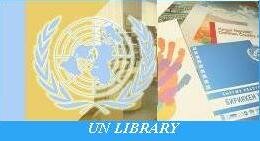| The High-Level International Forum "Uranium Tailings: Local Problems, Regional Consequences, Global Solution" took place in Geneva on 29 June 2009 |
|
Geneva, Switzerland – The High-Level International Forum organized by the initiative of the Government of the Kyrgyz Republic and supported by the countries of Central Asian region and UNDP country offices in Central Asia, took place in Geneva last 29 June. The timeliness and urgency of this Forum is explained by the existing tailings in the territory of Central Asia left as a legacy from the military-industrial complex of the former USSR. The state of these tailings which contain huge wastes of uranium and other technological wastes over tens of years after shutdown of these enterprises have significantly worsened. Main goals and tasks of the Forum To draw the attention of donor community to the following problems of uranium tailings in Central Asia:
The work of the Forum focused on obtaining practical results: development of coordinating mechanisms of joint efforts, determination and attracting of the required amount of financial and technical resources, new technologies for addressing uranium tailings on national, trans-boundary and regional levels. In order to prepare for the high-level Forum a Steering Committee was established in Kyrgyzstan headed by the prime minister of the Kyrgyz republic Mr. I. Chudinov. UNDP Resident representative in Kyrgyzstan, Mr. Neal Walker, was nominated the regional Coordinator of UNDP on the problem of radioactive wastes in Central Asia. Other focal points have been appointed in Kazakhstan, Tajikistan and Uzbekistan. The Forum follows the works of the Regional Conference in Bishkek (21−24 April 2009); during the Conference participants from Kazakhstan, Kyrgyzstan, Tajikistan and Uzbekistan, representatives of donor, international expert community and development agencies, private sector and non-governmental organizations developed a Framework Document and a package of project proposals. These documents, which reflect a consolidated approach of Central Asian countries to addressing the uranium legacy, were also discussed at the Forum in Geneva, and used for further bilateral and multilateral negotiations among Central Asian countries for attracting the needed funding, technical assistance and direct investments. Uranium Legacy in Central Asia During the second half of the 20th century, the countries of Central Asia served as the main suppliers of natural uranium and the main nuclear testing site in the former USSR. Large-scale uranium ore mining and processing and nuclear weapon testing on behalf of the Soviet military-industrial complex (MIC) led to an enormous amount of radioactive waste in the region, the overwhelming majority of which was placed in mining waste dumps and tailings sites. Over 800 million tons of waste from mining and processing radioactive scores is stored on tailings sites and in mining waste dumps of functioning and abandoned uranium mines in Kazakhstan, Kyrgyzstan, Uzbekistan and Tajikistan. Around 440 million tons or 54% of it is radioactive waste, spread on the surface of tailings sites. The volume of waste on tailings sites is larger than the volume in waste dumps, since a considerable volume of uranium ore was imported to Central Asia from other countries of the former socialist camp (Eastern Germany, Czech Republic, Bulgaria, Romania and China) for processing. The accumulation of a large amount of radioactive waste in the region generated a number of ecological issues, the key ones that pose a threat to the environment and safety of the population in Central Asia and are related to the legacy of the uranium industry include: environmental pollution, and first of all, contamination of water resources, which are the most important determining factor of Central Asia’s economy and ecology; the growing risk of radioactive waste storage sites being destroyed by natural disasters and natural and man-made catastrophes, typical in waste disposal areas. Central Asia is a region subject to natural disasters such as earthquakes, landslides and mudflows, spring floods and inundations, avalanches, extremely heavy rain and drought. This region is also threatened by anthropogenic catastrophes connected to the mining industry, tailings sites and dumps of radioactive/chemical waste, which appeared here back in Soviet times. Several factors, such as the high density of population in disaster-prone areas, significant overall population growth, poverty, irrational use of land and water, non-observance of construction norms and rules, as well as global climate change expose this region to natural disasters and man-made catastrophes. First part of the forum: plenary session Welcome speeches on behalf of the United Nations and by official delegations of Central Asia countries are planned first. Due to the role of Kyrgyzstan as the initiator of the International Forum in Geneva a welcome speech was delivered by the Prime Minister of the Kyrgyz Republic Mr. I. Chudinov. Also the program of plenary sessions includes presentations by the heads of delegations of Kazakhstan, Tajikistan and Uzbekistan. Second part of the Forum: Planned as the panel of experts and representatives of Central Asia countries, it started from the presentation «Uranium Tailings: Local Problems, Regional Consequences, Global Solutions», made by the UNDP Representative. The presentation included the documents of the Framework Document, which was discussed at the Central Asia Regional Conference in Bishkek in April. General discussions included presentations by representatives of international financial institutions, donors (IAEA, EC, OSCE, WB, etc.) and other partners, as well as discussion of the package of project proposals prepared by Central Asian countries. Participants had the opportunity to visit the photo exhibition and watch video film on the history, legacy and problems of uranium mining industry in Central Asian countries, as well as familiarize themselves with a publication on the results of regional electronic discussion, held by CARNet in the run-up-to the event (March-April 2009). The Forum resulted in a Joint Declaration of Central Asia countries to donor community, international organizations and private sector for financial support. |








